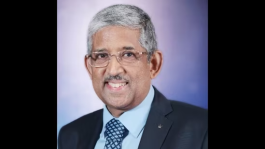Cell Phones are usually used for these purposes:
* Store contact information
* Make task or to-do lists
* Keep track of appointments and set reminders
* Use the built-in calculator for simple math
* Send or receive e-mail
* Get information (news, entertainment, stock quotes) from the Internet
* Play games
* Watch TV
* Send text messages
* Integrate other devices such as PDAs, MP3 players and GPS receivers
But have you ever wondered how a cell phone works? What makes it different from a regular phone? What do all those terms like PCS, GSM, CDMA and TDMA mean?
To start with, one of the most interesting things about a cell phone is that it is actually a radio -- an extremely sophisticated radio, but a radio nonetheless. The telephone was invented by Alexander Graham Bell in 1876, and wireless communication can trace its roots to the invention of the radio by Nikolai Tesla in the 1880s (formally presented in 1894 by a young Italian named Guglielmo Marconi). It was only natural that these two great technologies would eventually be combined.
In the dark ages before cell phones, people who really needed mobile-communications ability installed radio telephones in their cars. In the radio-telephone system, there was one central antenna tower per city, and perhaps 25 channels available on that tower. This central antenna meant that the phone in your car needed a powerful transmitter -- big enough to transmit 40 or 50 miles (about 70 km). It also meant that not many people could use radio telephones -- there just were not enough channels.
_______________________________________
Cell-phone Frequencies
The genius of the cellular system is the division of a city into small cells. This allows extensive frequency reuse across a city, so that millions of people can use cell phones simultaneously.
A good way to understand the sophistication of a cell phone is to compare it to a CB radio or a walkie-talkie.
* Full-duplex vs. half-duplex - Both walkie-talkies and CB radios are half-duplex devices. That is, two people communicating on a CB radio use the same frequency, so only one person can talk at a time. A cell phone is a full-duplex device. That means that you use one frequency for talking and a second, separate frequency for listening. Both people on the call can talk at once.
* Channels - A walkie-talkie typically has one channel, and a CB radio has 40 channels. A typical cell phone can communicate on 1,664 channels or more!
* Range - A walkie-talkie can transmit about 1 mile (1.6 km) using a 0.25-watt transmitter. A CB radio, because it has much higher power, can transmit about 5 miles (8 km) using a 5-watt transmitter. Cell phones operate within cells, and they can switch cells as they move around. Cells give cell phones incredible range. Someone using a cell phone can drive hundreds of miles and maintain a conversation the entire time because of the cellular approach.

In half-duplex radio, both transmitters use the same frequency. Only one party can talk at a time.
______________________________

In full-duplex radio, the two transmitters use different frequencies, so both parties can talk at the same time.
Cell phones are full-duplex.
In a typical analog cell-phone system in the United States, the cell-phone carrier receives about 800 frequencies to use across the city. The carrier chops up the city into cells. Each cell is typically sized at about 10 square miles (26 square kilometers). Cells are normally thought of as hexagons on a big hexagonal grid.
Because cell phones and base stations use low-power transmitters, the same frequencies can be reused in non-adjacent cells. The two purple cells can reuse the same frequencies.
Each cell has a base station that consists of a tower and a small building containing the radio equipment. We'll get into base stations later. First, let's examine the "cells" that make up a cellular system.
__________________________________
Cell-phone Channels
A single cell in an analog cell-phone system uses one-seventh of the available duplex voice channels. That is, each cell (of the seven on a hexagonal grid) is using one-seventh of the available channels so it has a unique set of frequencies and there are no collisions:
* A cell-phone carrier typically gets 832 radio frequencies to use in a city.
* Each cell phone uses two frequencies per call -- a duplex channel -- so there are typically 395 voice channels per carrier. (The other 42 frequencies are used for control channels -- more on this later.)
Therefore, each cell has about 56 voice channels available. In other words, in any cell, 56 people can be talking on their cell phone at one time. Analog cellular systems are considered first-generation mobile technology, or 1G. With digital transmission methods (2G), the number of available channels increases. For example, a TDMA-based digital system (more on TDMA later) can carry three times as many calls as an analog system, so each cell has about 168 channels available.
Cell phones have low-power transmitters in them. Many cell phones have two signal strengths: 0.6 watts and 3 watts (for comparison, most CB radios transmit at 4 watts). The base station is also transmitting at low power. Low-power transmitters have two advantages:
* The transmissions of a base station and the phones within its cell do not make it very far outside that cell. Therefore, in the figure above, both of the purple cells can reuse the same 56 frequencies. The same frequencies can be reused extensively across the city.
* The power consumption of the cell phone, which is normally battery-operated, is relatively low. Low power means small batteries, and this is what has made handheld cellular phones possible.
The cellular approach requires a large number of base stations in a city of any size. A typical large city can have hundreds of towers. But because so many people are using cell phones, costs remain low per user. Each carrier in each city also runs one central office called the Mobile Telephone Switching Office (MTSO). This office handles all of the phone connections to the normal land-based phone system, and controls all of the base stations in the region.
___________________________________________
Cell Phone Codes
All cell phones have special codes associated with them. These codes are used to identify the phone, the phone's owner and the service provider.
Let's say you have a cell phone, you turn it on and someone tries to call you. Here is what happens to the call:
* When you first power up the phone, it listens for an SID (see sidebar) on the control channel. The control channel is a special frequency that the phone and base station use to talk to one another about things like call set-up and channel changing. If the phone cannot find any control channels to listen to, it knows it is out of range and displays a "no service" message.
* When it receives the SID, the phone compares it to the SID programmed into the phone. If the SIDs match, the phone knows that the cell it is communicating with is part of its home system.
* Along with the SID, the phone also transmits a registration request, and the MTSO keeps track of your phone's location in a database -- this way, the MTSO knows which cell you are in when it wants to ring your phone.
* The MTSO gets the call, and it tries to find you. It looks in its database to see which cell you are in.
* The MTSO picks a frequency pair that your phone will use in that cell to take the call.
* The MTSO communicates with your phone over the control channel to tell it which frequencies to use, and once your phone and the tower switch on those frequencies, the call is connected. Now, you are talking by two-way radio to a friend.
* As you move toward the edge of your cell, your cell's base station notes that your signal strength is diminishing. Meanwhile, the base station in the cell you are moving toward (which is listening and measuring signal strength on all frequencies, not just its own one-seventh) sees your phone's signal strength increasing. The two base stations coordinate with each other through the MTSO, and at some point, your phone gets a signal on a control channel telling it to change frequencies. This hand off switches your phone to the new cell.
If the SID on the control channel does not match the SID programmed into your phone, then the phone knows it is roaming. The MTSO of the cell that you are roaming in contacts the MTSO of your home system, which then checks its database to confirm that the SID of the phone you are using is valid. Your home system verifies your phone to the local MTSO, which then tracks your phone as you move through its cells. And the amazing thing is that all of this happens within seconds.
The less amazing thing is that you may be charged insane rates for your roaming call. On most phones, the word "roam" will come up on your phone's screen when you leave your provider's coverage area and enter another's. If not, you'd better study your coverage maps carefully -- more than one person has been unpleasantly surprised by the cost of roaming. Check your service contract carefully to find out how much you're paying when you roam.
Note that if you want to roam internationally, you'll need a phone that will work both at home and abroad. Different countries use different cellular access technologies. More on those technologies later. First, let's get some background on analog cell-phone technology so we can understand how the industry has developed.
Cell Phone Codes
Electronic Serial Number (ESN) - a unique 32-bit number programmed into the phone when it is manufactured
Mobile Identification Number (MIN) - a 10-digit number derived from your phone's number
System Identification Code (SID) - a unique 5-digit number that is assigned to each carrier by the FCCWhile the ESN is considered a permanent part of the phone, both the MIN and SID codes are programmed into the phone when you purchase a service plan and have the phone activated.
_________________________________
Analog Cell Phones

Old school: DynaTAC cell phone, 1983
In 1983, the analog cell-phone standard called AMPS (Advanced Mobile Phone System) was approved by the FCC and first used in Chicago. AMPS uses a range of frequencies between 824 megahertz (MHz) and 894 MHz for analog cell phones. In order to encourage competition and keep prices low, the U. S. government required the presence of two carriers in every market, known as A and B carriers. One of the carriers was normally the local-exchange carrier (LEC), a fancy way of saying the local phone company.
Carriers A and B are each assigned 832 frequencies: 790 for voice and 42 for data. A pair of frequencies (one for transmit and one for receive) is used to create one channel. The frequencies used in analog voice channels are typically 30 kHz wide -- 30 kHz was chosen as the standard size because it gives you voice quality comparable to a wired telephone.
The transmit and receive frequencies of each voice channel are separated by 45 MHz to keep them from interfering with each other. Each carrier has 395 voice channels, as well as 21 data channels to use for housekeeping activities like registration and paging.
A version of AMPS known as Narrowband Advanced Mobile Phone Service (NAMPS) incorporates some digital technology to allow the system to carry about three times as many calls as the original version. Even though it uses digital technology, it is still considered analog. AMPS and NAMPS only operate in the 800-MHz band and do not offer many of the features common in digital cellular service, such as e-mail and Web browsing.
_____________________________________________
Along Comes Digital
Digital cell phones are the second generation (2G) of cellular technology. They use the same radio technology as analog phones, but they use it in a different way. Analog systems do not fully utilize the signal between the phone and the cellular network -- analog signals cannot be compressed and manipulated as easily as a true digital signal. This is the reason why many cable companies are switching to digital -- so they can fit more channels within a given bandwidth. It is amazing how much more efficient digital systems can be.
Digital phones convert your voice into binary information (1s and 0s) and then compress it (see How Analog-Digital Recording Works for details on the conversion process). This compression allows between three and 10 digital cell-phone calls to occupy the space of a single analog call.
Many digital cellular systems rely on frequency-shift keying (FSK) to send data back and forth over AMPS. FSK uses two frequencies, one for 1s and the other for 0s, alternating rapidly between the two to send digital information between the cell tower and the phone. Clever modulation and encoding schemes are required to convert the analog information to digital, compress it and convert it back again while maintaining an acceptable level of voice quality. All of this means that digital cell phones have to contain a lot of processing power.
Let's take a good look inside a digital cell phone.
___________________________________
Inside a Digital Cell Phone
On a "complexity per cubic inch" scale, cell phones are some of the most intricate devices people use on a daily basis. Modern digital cell phones can process millions of calculations per second in order to compress and decompress the voice stream.

If you take a basic digital cell phone apart, you find that it contains just a few individual parts:
* An amazing circuit board containing the brains of the phone
* An antenna
* A liquid crystal display (LCD)
* A keyboard (not unlike the one you find in a TV remote control)
* A microphone
* A speaker
* A battery
The circuit board is the heart of the system. Here is one from a typical Nokia digital phone:

The front of the circuit board

The back of the circuit board
In the photos above, you see several computer chips. Let's talk about what some of the individual chips do. The analog-to-digital and digital-to-analog conversion chips translate the outgoing audio signal from analog to digital and the incoming signal from digital back to analog. You can learn more about A-to-D and D-to-A conversion and its importance to digital audio in How Compact Discs Work. The digital signal processor (DSP) is a highly customized processor designed to perform signal-manipulation calculations at high speed.
The microprocessor handles all of the housekeeping chores for the keyboard and display, deals with command and control signaling with the base station and also coordinates the rest of the functions on the board.

The microprocessor
The ROM and Flash memory chips provide storage for the phone's operating system and customizable features, such as the phone directory. The radio frequency (RF) and power section handles power management and recharging, and also deals with the hundreds of FM channels. Finally, the RF amplifiers handle signals traveling to and from the antenna.

The display and keypad contacts
The display has grown considerably in size as the number of features in cell phones have increased. Most current phones offer built-in phone directories, calculators and games. And many of the phones incorporate some type of PDA or Web browser.

The Flash memory card on the circuit board

The Flash memory card removed
Some phones store certain information, such as the SID and MIN codes, in internal Flash memory, while others use external cards that are similar to SmartMedia cards.

The cell-phone speaker, microphone and battery backup
Cell phones have such tiny speakers and microphones that it is incredible how well most of them reproduce sound. As you can see in the picture above, the speaker is about the size of a dime and the microphone is no larger than the watch battery beside it. Speaking of the watch battery, this is used by the cell phone's internal clock chip.
What is amazing is that all of that functionality -- which only 30 years ago would have filled an entire floor of an office building -- now fits into a package that sits comfortably in the palm of your hand!
In the next section, we'll get into the cell-phone networking methods.
Cell Phone Network Technologies: 2G
There are three common technologies used by 2G cell-phone networks for transmitting information (we'll discuss 3G technologies in the 3G section):- Frequency division multiple access (FDMA)
- Time division multiple access (TDMA)
- Code division multiple access (CDMA)
The first word tells you what the access method is. The second word, division, lets you know that it splits calls based on that access method.
- FDMA puts each call on a separate frequency.
- TDMA assigns each call a certain portion of time on a designated frequency.
- CDMA gives a unique code to each call and spreads it over the available frequencies.
FDMA
FDMA separates the spectrum into distinct voice channels by splitting it into uniform chunks of bandwidth. To better understand FDMA, think of radio stations: Each station sends its signal at a different frequency within the available band. FDMA is used mainly for analog transmission. While it is certainly capable of carrying digital information, FDMA is not considered to be an efficient method for digital transmission.

In FDMA, each phone uses a different frequency.
TDMA
TDMA is the access method used by the Electronics Industry Alliance and the Telecommunications Industry Association for Interim Standard 54 (IS-54) and Interim Standard 136 (IS-136). Using TDMA, a narrow band that is 30 kHz wide and 6.7 milliseconds long is split time-wise into three time slots.
Narrow band means "channels" in the traditional sense. Each conversation gets the radio for one-third of the time. This is possible because voice data that has been converted to digital information is compressed so that it takes up significantly less transmission space. Therefore, TDMA has three times the capacity of an analog system using the same number of channels. TDMA systems operate in either the 800-MHz (IS-54) or 1900-MHz (IS-136) frequency bands.

TDMA splits a frequency into time slots.
GSM
Unlocking Your GSM Phone
Any GSM phone can work with any SIM card, but some service providers "lock" the phone so that it will only work with their service. If your phone is locked, you can't use it with any other service provider, whether locally or overseas. You can unlock the phone using a special code -- but it's unlikely your service provider will give it to you. There are Web sites that will give you the unlock code, some for a small fee, some for free.
TDMA is also used as the access technology for Global System for Mobile communications (GSM). However, GSM implements TDMA in a somewhat different and incompatible way from IS-136. Think of GSM and IS-136 as two different operating systems that work on the same processor, like Windows and Linux both working on an Intel Pentium III. GSM systems use encryption to make phone calls more secure. GSM operates in the 900-MHz and 1800-MHz bands in Europe and Asia and in the 850-MHz and 1900-MHz (sometimes referred to as 1.9-GHz) band in the United States. It is used in digital cellular and PCS-based systems. GSM is also the basis for Integrated Digital Enhanced Network (IDEN), a popular system introduced by Motorola and used by Nextel.
GSM is the international standard in Europe, Australia and much of Asia and Africa. In covered areas, cell-phone users can buy one phone that will work anywhere where the standard is supported. To connect to the specific service providers in these different countries, GSM users simply switch subscriber identification module (SIM) cards. SIM cards are small removable disks that slip in and out of GSM cell phones. They store all the connection data and identification numbers you need to access a particular wireless service provider.
Unfortunately, the 850MHz/1900-MHz GSM phones used in the United States are not compatible with the international system. If you live in the United States and need to have cell-phone access when you're overseas, you can either buy a tri-band or quad-band GSM phone and use it both at home and when traveling or just buy a GSM 900MHz/1800MHz cell phone for traveling.
CDMA
CDMA takes an entirely different approach from TDMA. CDMA, after digitizing data, spreads it out over the entire available bandwidth. Multiple calls are overlaid on each other on the channel, with each assigned a unique sequence code. CDMA is a form of spread spectrum, which simply means that data is sent in small pieces over a number of the discrete frequencies available for use at any time in the specified range.

In CDMA, each phone's data has a unique code.
2G is a cell phone network protocol. Click here to learn about network protocols for Smartphones.
All of the users transmit in the same wide-band chunk of spectrum. Each user's signal is spread over the entire bandwidth by a unique spreading code. At the receiver, that same unique code is used to recover the signal. Because CDMA systems need to put an accurate time-stamp on each piece of a signal, it references the GPS system for this information. Between eight and 10 separate calls can be carried in the same channel space as one analog AMPS call. CDMA technology is the basis for Interim Standard 95 (IS-95) and operates in both the 800-MHz and 1900-MHz frequency bands.
Ideally, TDMA and CDMA are transparent to each other. In practice, high-power CDMA signals raise the noise floor for TDMA receivers, and high-power TDMA signals can cause overloading and jamming of CDMA receivers.
2G is a cell phone network protocol. Click here to learn about network protocols for Smartphones.
Now let's look at the distinction between multiple-band and multiple-mode technologies.
___________________________________________
Cell-phone Network Technologies: 3G
3G technology is the latest in mobile communications. 3G stands for "third generation" -- this makes analog cellular technology generation one and digital/PCS generation two. 3G technology is intended for the true multimedia cell phone -- typically called smartphones -- and features increased bandwidth and transfer rates to accommodate Web-based applications and phone-based audio and video files.

Sony Ericsson V800 3G phone
3G comprises several cellular access technologies. The three most common ones as of 2005 are:
* CDMA2000 - based on 2G Code Division Multiple Access (see Cellular Access Technologies)
* WCDMA (UMTS) - Wideband Code Division Multiple Access
* TD-SCDMA - Time-division Synchronous Code-division Multiple Access
3G networks have potential transfer speeds of up to 3 Mbps (about 15 seconds to download a 3-minute MP3 song). For comparison, the fastest 2G phones can achieve up to 144Kbps (about 8 minutes to download a 3-minute song). 3G's high data rates are ideal for downloading information from the Internet and sending and receiving large, multimedia files. 3G phones are like mini-laptops and can accommodate broadband applications like video conferencing, receiving streaming video from the Web, sending and receiving faxes and instantly downloading e-mail messages with attachments.
Of course, none of this would be possible without those soaring towers that carry cell-phone signals from phone to phone.
3G is a cell phone network protocol. Click here to learn about network protocols for Smartphones.
Source: howstuffworks.com









